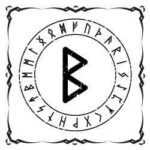Fehu is one of the ancient runes from the Elder Futhark, the oldest runic alphabet. I have always been fascinated by the symbolism behind these stones and the deep history they represent. This article explains the meaning of Fehu in clear language, covering its roots, connections with Freyr’s Aett, detailed interpretations, pronunciation, translation, associated keywords, and its use in magical practices. An image is provided below so you can visualize an ancient rune stone marked with the Fehu symbol.

Elder Futhark Runes
The Elder Futhark is the earliest form of runic writing used by Germanic tribes. These runes were carved on stone, wood, or metal and served both as a method to record language and as symbols imbued with rich cultural beliefs. Each rune tells a story through its distinct pattern and shape, connecting everyday life with spiritual ideas of the past. Historical records show that runes were practical tools, even though today many view them as mysterious signs. Scholars point out that while the original purpose was functional, the shapes also encapsulated nature, community values, and the passage of time.
This background not only makes the runes interesting artifacts but also helps modern enthusiasts appreciate the layered symbolism in each mark. Their long history and evolution have allowed these symbols to carry multiple meanings, which continue to inspire both academic study and personal reflection.
Freyr’s Aett Meaning
Fehu belongs to Freyr’s Aett, a family of runes that share thematic similarities. Freyr, a very important deity associated with prosperity, abundance, and growth, gives his name to this group. Many texts discuss how the runes in this clan are linked to themes of fertility and resourcefulness. In studying these connections, I stumbled upon several sources that outline how these runes represent not only material wealth but also creative and spiritual bounty.
This grouping encourages us to see wealth as more than currency, showing it can include creative energy and inner strength. Understanding the Aett provides a clearer context for reading Fehu and similar runes, offering both historical insights and practical lessons for today.
Fehu Meaning
Fehu is widely recognized as a powerful symbol, often represented by a stylized F. Its original meaning was linked to cattle, which in ancient times were a measure of wealth. Over the years, the image of cattle evolved into a broader symbol for prosperity. Fehu reminds us that wealth is not solely defined by material possessions but also by the flow of energy and resources in one’s life.
This rune encourages a thoughtful approach to resource management, whether those resources are financial, creative, or emotional. For many, Fehu stands as an emblem of balance—a prompt to enjoy gains and remain mindful during losses. Its layered meanings offer guidance on how to balance outer success with inner well-being, urging us to distribute our resources wisely and creatively.
What Else Is Fehu Known As
Fehu appears under other names in ancient texts. Some early writings call it “Feoh,” a variation that still centers on the themes of wealth and prosperity. I stumbled upon several references that show these different names appearing across regions and translations, yet all maintain the same core message regarding abundance.
This diversity in naming reflects the widespread influence of cultural ideas. Although the pronunciation or spelling may change, the underlying message about the value of resources remains steady and continues to resonate with those who study runic symbols today.
How to Pronounce Fehu
Pronunciation of Fehu can be challenging for beginners. The most common modern approximation is to say it as “Fay-who,” with a strong first syllable followed by a softer, flowing second one. This simple guide helps ensure that the word is spoken correctly during readings, rituals, or meditative practices.
Paying attention to pronunciation can enhance one’s connection with the rune, preserving its traditional sound and making it easier to invoke its energy during personal practices.
Translation of Fehu
The translation of Fehu primarily revolves around ideas of wealth, prosperity, and movable possessions. Early interpretations linked it directly to livestock, but over time its meaning has expanded to cover all forms of valuable resources. The term now encompasses the exchange, flow, and storage of value, both in a literal economic sense and as a metaphor for personal and creative growth.
This broader translation invites us to look beyond just physical gains. By considering both tangible objects and intangible energies, we can appreciate how ancient societies viewed wealth as an ever-changing flow rather than a static asset.
Keywords Associated to Fehu
The rune Fehu is connected with several key ideas. For instance, many associate it with wealth, prosperity, resourcefulness, and abundance. Other common keywords include financial gain, creative energy, and possessions. These terms serve as a simple guide for practitioners who use runic symbols in meditation and divination. They remind us to focus on both the material and immaterial aspects of prosperity, ensuring a balanced understanding of abundance.
Upright Meaning
When Fehu is drawn in an upright position, its message is one of growth and positive progress. This orientation is typically seen as a signal of successful ventures, increased personal wealth, and the smooth flow of energy. In its upright form, Fehu encourages not only the accumulation and sharing of resources but also the nurturing of one’s creative and emotional energies.
The upright rune suggests that when effort and timing align, opportunities for expansion naturally emerge. It can serve as a visual reminder to invest in new projects, manage resources with care, and maintain a balanced approach to both giving and receiving.
Reverse Meaning
In contrast, a reversed Fehu carries a cautionary tone. When inverted, this symbol often warns of potential mismanagement of resources or blockages in the flow of creative energy. A reversed Fehu may indicate that excessive attachment to material wealth is clouding judgment or causing imbalance.
This orientation serves as a prompt to reassess one’s habits and priorities. It suggests that taking a step back to review financial, creative, or personal investments could be necessary to restore equilibrium and ensure long-term well-being.
Magical Uses of Fehu
Fehu is a common feature in various magical and divinatory practices. Many texts and traditions use this rune to invite prosperity and stimulate creative energy. Practitioners include Fehu in rituals, spells, and meditations to channel its vibrant force toward success and protection. Its symbolism goes far beyond just monetary gain, covering all forms of well-being and abundance.
Those who work with runic magic often create talismans and amulets featuring Fehu, believing these objects to capture and direct its energy. Rituals may involve setting clear intentions, along with actions like lighting candles or arranging complementary symbols to help focus the rune’s power. In meditation, concentrating on Fehu can aid in visualizing the smooth flow of resources and in identifying areas where energy might be stagnant or misdirected.
The practical use of Fehu in magic lies in its reminder to manage assets wisely and to invest time in both material pursuits and personal growth. By doing so, one creates a balance that nourishes both external success and inner fulfillment.
Frequently Asked Questions
Question: What does Fehu symbolize besides material wealth?
Answer: Fehu represents abundance in many forms. It stands for creative energy, personal growth, and the dynamic flow of resources in life.
Question: How can I incorporate Fehu in my daily practices?
Answer: Many people include Fehu in meditation or ritual work to remind themselves to manage their resources wisely and encourage overall growth. The rune acts as a gentle nudge to balance both tangible and intangible assets.
Question: What should I consider if Fehu appears reversed in a reading?
Answer: A reversed Fehu signals obstacles in the flow of wealth or creative energy. It may be a call to rethink your approach to resource management and restore balance by reexamining current habits.
Wrapping Up
Understanding the Fehu rune offers a window into ancient symbolism that remains relevant even today. Whether you are using it in divination, meditation, or magical rituals, Fehu provides practical insights into the management of both material and inner wealth. Its message reminds us that prosperity involves a balanced flow of energy, where careful stewardship of resources—financial, creative, or emotional—leads to a more fulfilling life.
Each section of this article has aimed to trim back the complexities and offer you a clear picture of Fehu’s significance. From its origins in the Elder Futhark and its ties to Freyr’s Aett, to its practical application in everyday practices, the rune consistently calls attention to the importance of balance and mindful resource management. May your experience with Fehu help you tap into a well of abundance that nurtures every aspect of your life.



